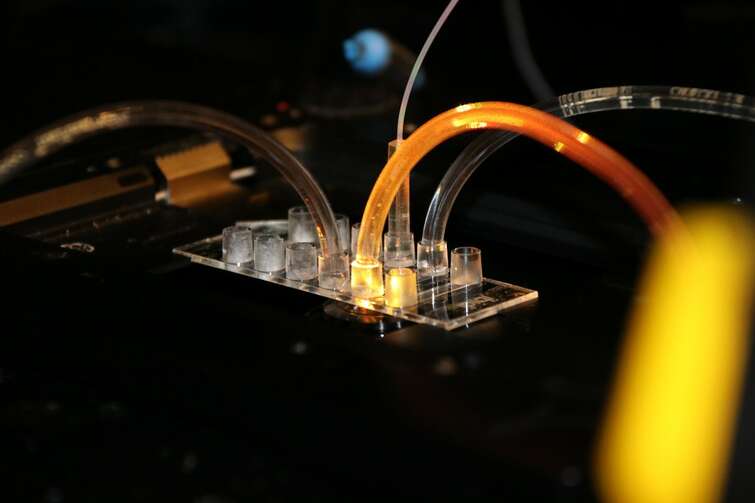
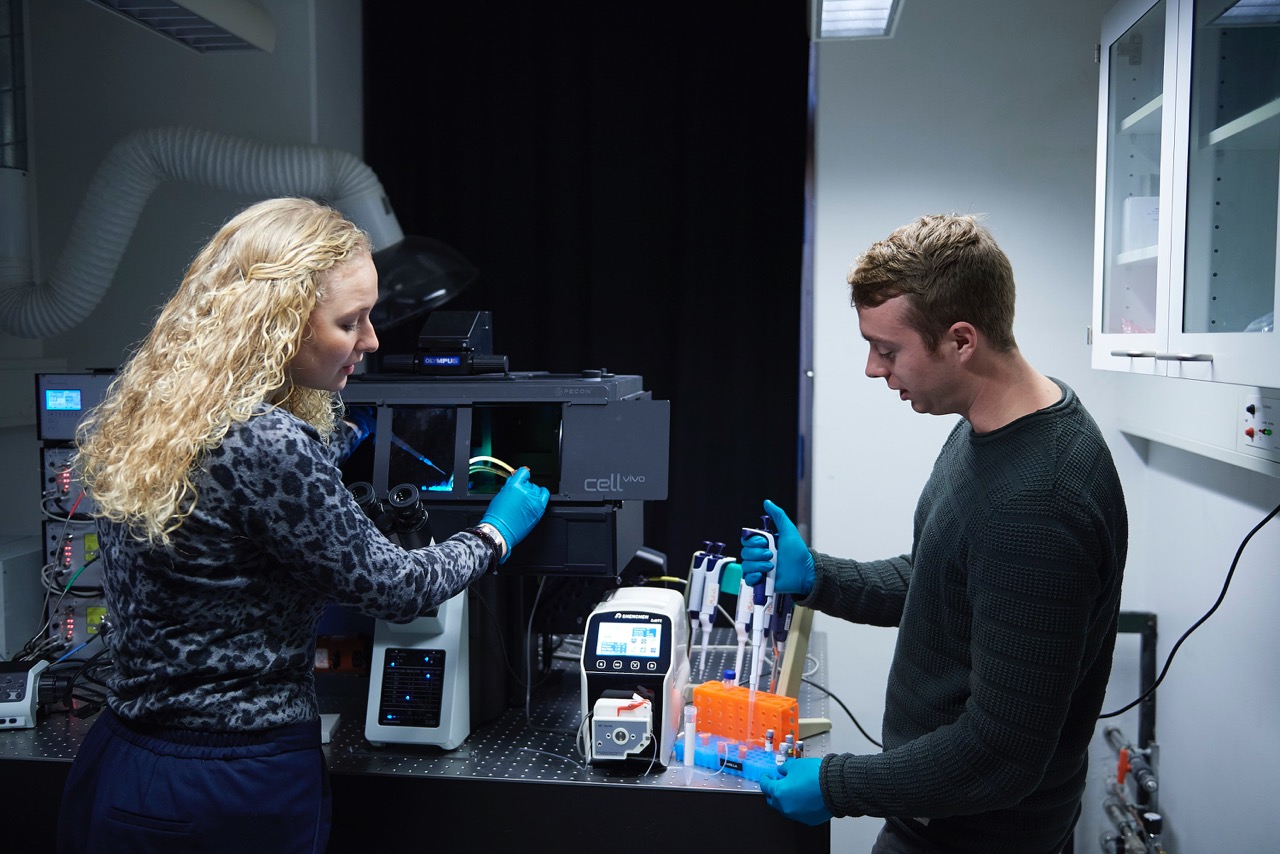
Single molecule and cell biophysics for Biomedicine - Hatzakis Lab
The main objective of my group is to augment our understanding on the molecular mechanisms that underlie and control vital cellular functions. We approach this challenge by deciphering the dynamic interplay between the function and spatiotemporal localization of biomolecules (virus, dug nanocarrier, oligonucleotides or protein assemblies) and how this correlate to cellular and organismal response.
We have therefore pioneered the development of novel new imaging technologies - with an emphasis on single particle and live cell microscopy - that promises to shed light on the interplays between the behaviour (dynamics, function and localisation) of biomolecules and high throughput single particle screening methodologies to decipher oligonucleotide interactions with membranes. By tracking the spatiotemporal displacement and localization of one protein - or an assembly - in real time we revealed internalization pathways and cell fate of nanoparticles and viruses. Our functional and FRET studies at the fundamental limit of individual catalytic cycle, on the other hand have helped deciphering protein structure and function dependence on temporal cell localization and the design of novel ligand biasing aberrant biological function.
Recognizing that 4D imaging generates terabytes of data sets, that are prohibitively hard to be quantitatively evaluated by current semi-manual analysis, we have developed toolboxes and softwares based on machine learning to rapidly, reliably and free of human cognitive biases, analyze the wealth of novel microscopy data we, and others, produce. Our all-inclusive softwares for windows and macs, offer transition from raw data to quantitative analysis and data classification with <5 clicks, accelerating the automatic analysis by ~6 orders of magnitude. These combined methodologies bridge 4D imaging with sophisticate image analysis required for delving into the era of 4D cell and tissue imaging.
In spite of their immense importance, current understanding on enzymatic behaviour relies primarily on static pictures and ensemble functional assays and thus dynamic characteristics remain masked due to ensemble averaging. We therefore employ single molecule techniques to interrogate the behaviour of individual enzymes and elicit a detailed understanding of the molecular level details underlying enzymatic function and regulation. Using state of the art fluorescent microscopy techniques, we investigate how the complex protein conformational dynamics facilitate catalysis, as well as the existence and life times of enzymatic functional states and how point mutations, posttranslational modifications or effectors, redistribute them.
Advancing our understanding of functional protein dynamics will lead both to the design of novel pharmaceutics and the in silico design of novel biocatalysts with tailor made functionalities for biotechnological applications.
The Hatzakis Group labs are equipped with everything needed to perform state of the art experiments on a variety of protein, enzyme and related experiments. Most experiments in the group are build around fluorescent microscopy, performed on one (or both) of two microscopes:
- An IX81 Olympus confocal microscope
- An Olympus Total Internal Reflection Fluorescence microscope (TIRFm) set up for super resolution microscopy
- State of the art Olympus SpinSR10 Confocal Super Resolution Microscope
- GMO facilities: for cell culture and protein expression and purification
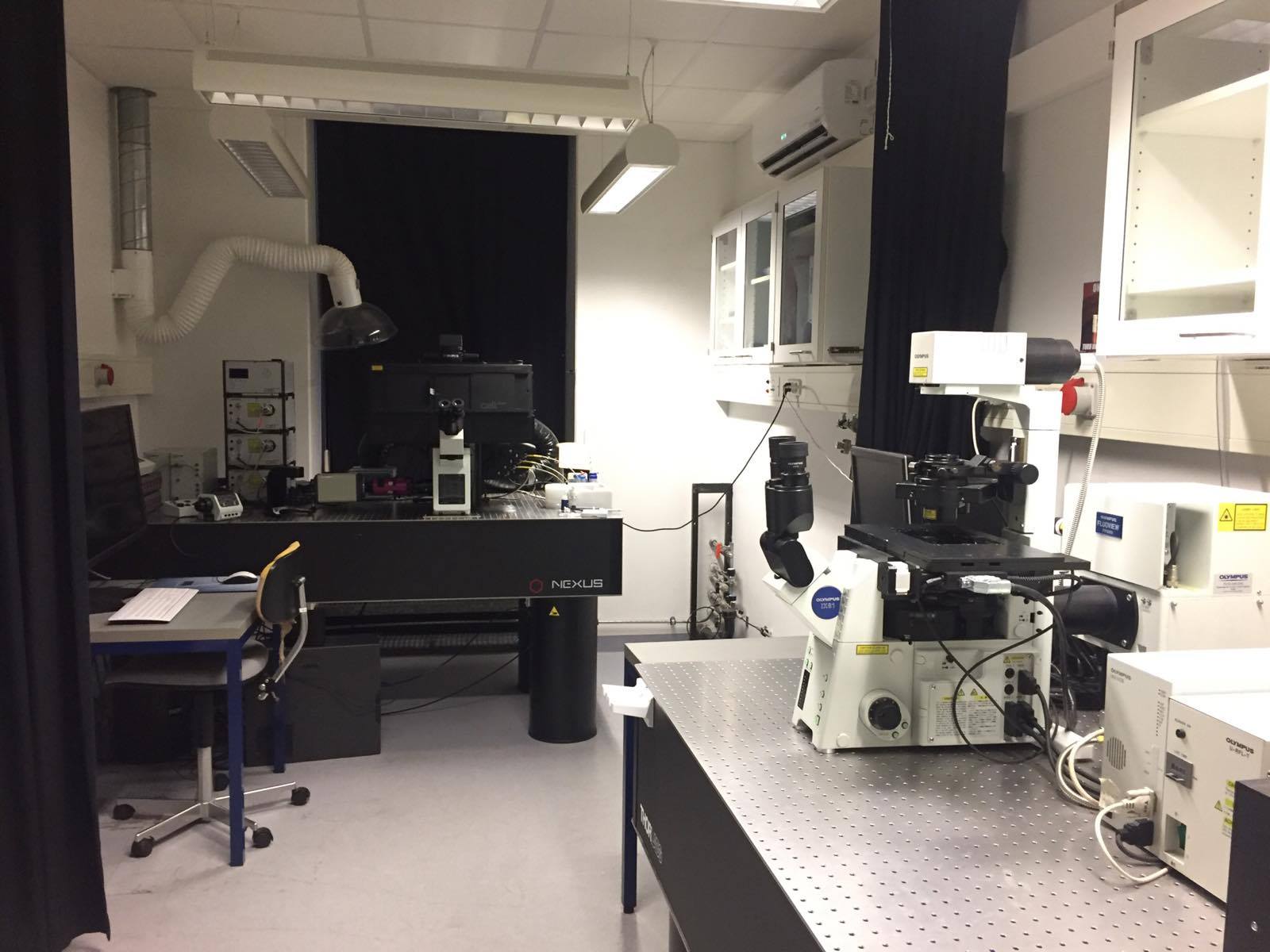
Selected project
Biased metabolism
We introduced the concept of Biased metabolism, a mechanism akin to biased signaling of GPCRs but for metabolic enzymes like P450 oxidoreductase . we identified a new pharmacological target that of P450 oxidoreductase the omnipotent electron activator of P450 enzymes Using a combination of computational modeling functional assays and single molecule structureal assays we found that ligands bind on POR stabilizes specific conformational states that are linked to distinct downstream metabolic outcomes in cell Biased metabolism may allow designing pathway-specific therapeutics or personalized food suppressing undesired, disease-related, metabolic pathways.
Relevant publications:
Jensen, S.B. et al. Biased cytochrome P450-mediated metabolism via small-molecule ligands binding P450 oxidoreductase. Nature Communications (2021), 12, 2260.
Laursen, T. et al. Characterization of a Dynamic Metabolon Producing the Defense Compound Dhurrin in Sorghum. Science (2017), 354, 890-893.
Bavishi, K. et al. Direct Observation of Multiple Conformational States in Cytochrome P450 Oxidoreductase and their Modulation by Membrane Environment. Scientific Reports (2018), 8, 1-9.
Laursen, T. et al. Single Molecule Activity Measurements of Cytochrome P450 Oxidoreductase Reveal the Existence of Two Discrete Functional States. ACS Chem. Biol. (2014), 9, 630-634.
Biomolecular recognition by single particle tracking
Lipases are interfacially activated hydrolases, which play an important role in both biological processes as well as industrial applications, catalyzing reactions at the water-lipid interface. Our understanding of lipases function to date primarily relies on averaging techniques reporting the behavior of large ensemble of heterogeneous enzymes, which may disguise heterogenic behaviors. We have developed a single-molecule fluorescence microscopy assay to track thousands of individual Thermomyces Lanuginosus Lipase (TLL) enzymes, on native trimyristin substrate surfaces. Our high- quality data allow us to directly observe distinct patterns of lipase diffusional properties both within the observation time of a single trajectory and after system equilibration. Readouts on multiple lipase mutants allowed us to delve into a deeper understanding of molecular detail governing enzymatic function and provide links of enzyme structure to functional phenotypes. Using Deep-Learning methods, we decipher the subtle mechanistic differences and provide a model for function/inhibition and their relation to structure.
Relevant publications:
Pinholt, H. D. et al. Single Particle Diffusional Fingerprinting A machine learning framework for quantitative analysis of heterogeneous diffusion. PNAS (2021), 31, 118.
Bohr, S.S.-R. et al. Direct observation of Thermomyces lanuginosus lipase diffusional states by Single Particle Tracking and their remodeling by mutations and inhibition. Scientific Reports (2019), 9, 2654.
Bohr, S.S.-R. et al. Label-Free Fluorescence Quantification of Hydrolytic Enzyme Activity on Native Substrates Reveals How Lipase Function Depends on Membrane Curvature. Langmuir (2020), 36, 23, 6473-6481.
Nanocontainers for delivery of biologicals
By employing single particle tracking on novel nano-carriers in drug delivery, we are able to investigate their interactions with biological samples and simultaneously monitor particle mobility and drug release in live human cells. We aim to utilize the methodology to develop and optimize site specific and fast delivery of tailor made pharmaceuticals. To do so, we deploy advanced statistical analysis in combination with machine learning - thus deciphering the mechanistic details that governs interactions at the cellular level.
Ultimo June 2019 our lab will be equipped with a state of the art Olympus super resolution spinning disk microscope, thus extending the method to live 3D tracking.
Relevant publications:
Wan, F. et al. Ultrasmall TPGS–PLGA Hybrid Nanoparticles for Site-Specific Delivery of Antibiotics into Pseudomonas aeruginosa Biofilms in Lungs. ACS Appl. Mater. Interfaces (2020), 12, 1, 380-389.
Singh, P. K. et al. Direct Observation of Sophorolipid Micelle Docking in Model Membranes and Cells by Single Particle Studies Reveals Optimal Fusion Conditions. Biomolecules (2020), 10(9), 1291.
Streck, S. et al. Interactions of Cell-Penetrating Peptide-Modified Nanoparticles with Cells Evaluated Using Single Particle Tracking. ACS Appl. Bio Mater. (2021), 4, 4, 3155-3165.
CRISPR structure function
Adaptive immunity in bacteria is accomplished by the CRISPR system, and CRISPR-associated proteins (Cas). Proteins coupled with RNA are guided by this system to recognize and cleave foreign genetic material. As such, it’s also a powerful method for genome editing, and is receiving lot of bio technical and medical attention currently. By using single molecule FRET we can study this system in great detail, and obtain a wealth of structural and kinetic information, when combining with other techniques. Read how we did this in Stella et al. (2018), published in Cell.
Accelerating biological discoveries by machine learning
Advanced microscopic techniques produce vast amounts of unstructured data the analysis of which by conventional methodologies is tedious , time consuming and may be biased by unconscious biases. We have been developing agnostic quantitative and automated analysis methodologies based on machine learning to treat classify and annotate biological behaviors . The toolboxes offer rapid analysis often accelerated by 3-6 orders of magnitude, help eliminating potential human biases and provide statistical insights on biological parameters that underlie and control protein function and cellular responses
Selected publications
- Malle, M. G., et al.Nature Chemistry (2022)
- Schmidt, S. G., et al.Nature Communications 13, 2446 (2023)
- Jensen, S. B., et al.Nature Communications 12, 2260 (2021)
- Pinholt, H. D., et al.PNAS 31, 118 (2021)
- Thomsen, J., et al.eLife 9 (2020)
- Thomsen, S. P., et al.Nature Communications 175, 5655 (2019)
- Stella, S. et al.Cell 175, 1856–1871.e21 (2018)
- Wan, F., et al.ACS Appl. Interfaces 12, 1, 380–389 (2019)
- Laursen, T. et al.Science 354, 890–893 (2016)
- Veshaguri, S. et al.Science 351, 1469–1473 (2016)
Google scholar profile
-
2014: Villum Foundation, Young Investigator Fellowship

-
2016: Novozymes A/S & The Henning Holck-Larsen Foundation, Guest Post-doctoral Fellowship
-
2016: Novo Scholarship Programme
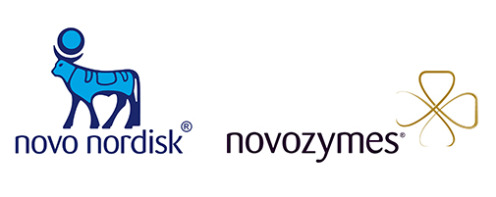
-
2017: Carlsberg Foundation, Most Distinguished Associate Professor Fellowship
![]()
-
2017: Marie Curie, Post Doc Fellowship

-
2017: Lundbeck fonden, Post Doc Fellowship

-
2017: Velux foundation Center: Advanced Biomolecular Engineering

-
2018: Innovation Foundation Denmark, Industrial Post-doc

Professor, group leader
 Nikos S Hatzakis
Nikos S Hatzakis
Hatzakis lab
Nano Science Center
Department of Chemistry
Faculty of Science
Phone: 50202951
E-mail:hatzakis@nano.ku.dk
Nikos Hatzakis' main research interest is to obtain a fundamental understanding of the parameters underlying regulation of enzymatic function. Enzymes regulate a plethora of vital cellular processes and aberration in their function can result in countless disease states. They are also essential components in multiple industrial applications including drug synthesis and detergent development. Harnessing the biomolecular insights of current single molecule experiments allows us to unmask the structural and functional dynamics of major drug metabolism enzymes. Understanding how these enzymes operate paves the way for the design of novel pharmaceutics.
|
Min Zhang Assistant Professor |
Post-doctoral Fellow |
Joint Post-doctoral fellow with Prof. Knud Jørgen Jensen |
|
Post-doctoral Fellow |
Mikhail Baibakov Post-doctoral Fellow |
Matias E. Moses Industrial postdoc, Novozymes |
|
Søren S. -R. Bohr Ph.D. Fellow |
Camilla D. Thorlaksen Ph.D. Fellow, Novo Nordisk STAR programme |
Ph.D. Fellow |
|
Ge Huang Ph.D. Fellow |
Ph.D. Fellow |
Ph.D. Fellow |
|
Sara Vogt Bleshøy Ph.D. Fellow |
Emily Winther Sørensen Ph.D. Fellow |
Richard Michael Ph.D. Fellow (main supervisor Wouter Boomsma) |
|
Software Engineer |
Anette Juma Research Assistant |
Henrik Pinholt Master Student |
|
Sabrina Gennis Master Student |
Steen W. Bender Master Student |
Marcus Winther Dreisler Master Student |
|
Stavroula-Valia Margaritaki Master Student |
Kian Kirchof Master Student |
Harris Sideris Master Student |
|
Guanze Li Master Student |
Emilie Elisabeth Milan Nielsen Master Student |
Freya Björk Reinhold Master Student |
|
Master Student |
Simos Dagialis Erasmus+ Fellow |
Nikoleta Palioudaki Erasmus+ Fellow |
|
Despoina Moraiti Erasmus+ Fellow |
Erasmus+ Fellow |
Bachelor Student |
DeepFRET
Rapid and automated single molecule FRET data classification using deep learning.
Extraction of liposome intensity
Python based script for extraction and analysis of .tif formatted image files. The script can extract the intensity from individual liposomes based in a changeable ROI size given initially and subtract local background.
Cell analyzer HEK293/PYY/eYFP
Python based script for extraction and analysis of .tif formatted image files. The script will identify cells on a image based on set thresholds and parameters. From this a mask will be created to extract the intensity from up to three channels, here corresponding to signal from membrane stain (blue), yellow fluorescent protein (YFP, green) and Cy5/Atto655 (red).
Single Particle Tracking of Lipases
Python Script for analysing .tif movies of lipases diffusing on a surface. Code used to make data for Bohr, S. S.-R. et al. Scientific Reports, 2019.
Diffusional fingerprinting
An all inclusive tool for SPT data analysis, processing, and classification. The method uses machine learning for dissecting the features that underlie diffusional behavior and establishing molecular identity, regardless of the underlying diffusion type. See our recent paper in PNAS 2021.
https://github.com/hatzakislab/Diffusional-Fingerprinting
Contact
Single molecule and cell biophysics for Biomedicine - Hatzakis Lab
Nano-Science Center, Department of Chemistry, Thorvaldsensvej 40, DK-1871 Frederiksberg C
Nikos Hatzakis
Professor
Office: T554
Phone: +45 3533 4502
E-mail: hatzakis@chem.ku.dk


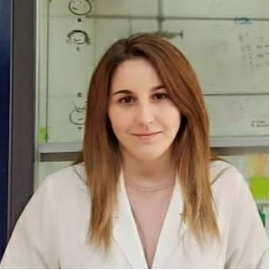 Errika Voutyritsa
Errika Voutyritsa Gareth Gerald Doherty
Gareth Gerald Doherty Artu Breuer
Artu Breuer



 Jacob Kæstel-Hansen
Jacob Kæstel-Hansen
 Freja S. -R. Bohr
Freja S. -R. Bohr Frank Høgh Schulz
Frank Høgh Schulz
 Andreas Malthe Faber
Andreas Malthe Faber




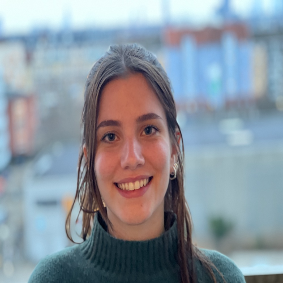



 Xenia Quaas
Xenia Quaas


